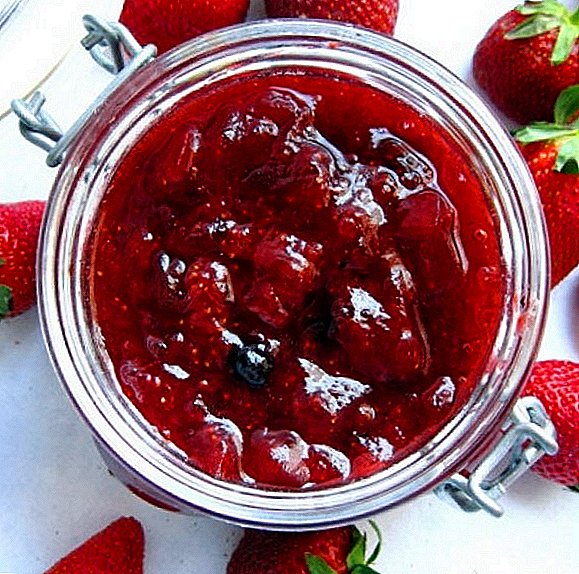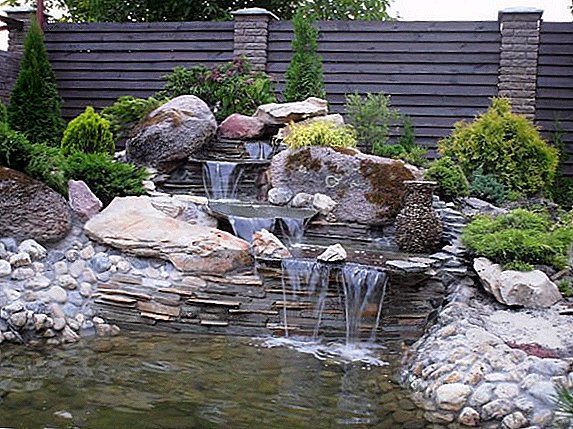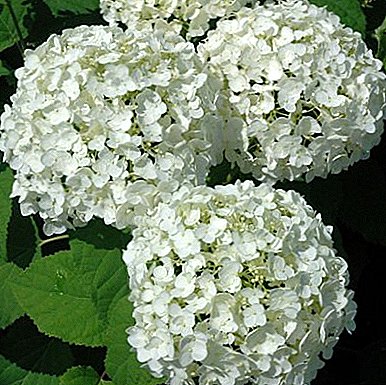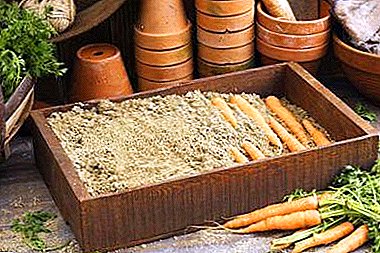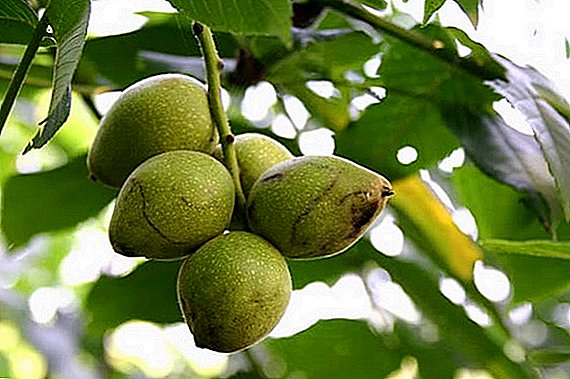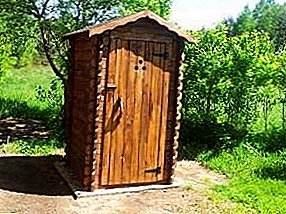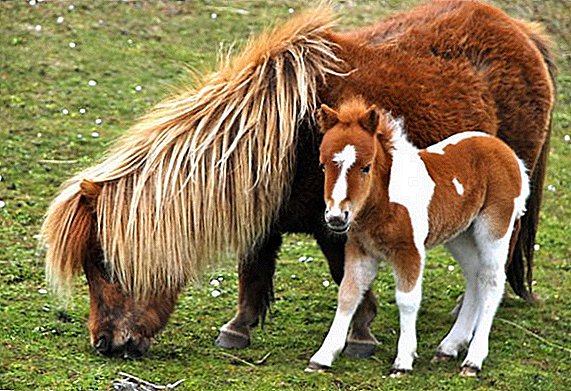 Ponies are not so popular in private households as heavy horses, and are rarely used in breeding kennels, but still there is a category of people who prefer such small horses.
Ponies are not so popular in private households as heavy horses, and are rarely used in breeding kennels, but still there is a category of people who prefer such small horses.
Let's find out how ponies appeared, in what areas they can be used and what you should know about the most popular breeds.
Origin
The pony is a subtype of the familiar domestic horse, but with reduced parameters. Low growth (up to 140 cm) is the calling card of these animals, otherwise they resemble ordinary horses with a strong strong neck, short legs and a high level of endurance.
Many believe that the first ponies appeared on the European islands located in the northern part of Scandinavia, where they had long lived in rocky conditions. The local population used them for the transport of goods, and speed did not play any role. In particular, such small horses were often used for transporting ore and for helping people in agriculture, and their small growth had absolutely no significance.
Did you know? In different states, the name "pony" means completely different horses. So, in the Russian Federation, the height of a mini-horse at the withers should be no more than 110 cm, and in England, animals with a height of 143 cm at the withers or even higher are classified as "pony."Many breeds of small horses, widely used today in horse racing, formed only in the XIX-XX centuries.
Scope of application
At the mention of ponies, the first thing that comes to mind is the riding of children and performances in the circus, but, in truth, the scope of application of these small horses is much wider. Often, they become the main tool of rehabilitation practices for people with disabilities, regardless of their age, are great for hippotherapy with children and can become true friends to them, becoming attached to a little man as good as a dog.  There are cases when ponies transported people in sledges and worked in the service of express delivery, which earned worldwide fame. Nowadays, small horses can even be used in sports, however, competitions are held among representatives of one type of horse.
There are cases when ponies transported people in sledges and worked in the service of express delivery, which earned worldwide fame. Nowadays, small horses can even be used in sports, however, competitions are held among representatives of one type of horse.
With home keeping, ponies often become excellent companions, and if you choose the right breed of animal, you can also use it to help with household chores, particularly agricultural ones.
Important! Do not forget that the majority of ponies are small horses unsuitable for hard work. Excessive stress on them can cause serious health problems.
Pony Breeds
The scope of its use directly depends on the breed of an animal, so before choosing a pony it is very important to study all the characteristics of a particular animal. Let's look at the most famous breed of small horses.
Welsh
Welsh pony is one of the most elegant representatives of its kind. Today it is difficult to say exactly where and when the first representatives of these animals appeared, but they received modern features after the Roman legions appeared in Britain (the researchers believe that it was at this time that Welsh ponies actively reproduced with the participation of other species that influenced their appearance and performance).  The exterior of modern representatives of this species has the following features:
The exterior of modern representatives of this species has the following features:
- growth - 120-152 cm;
- head - relatively large, with large nostrils;
- back - short and rounded, with well-marked croup;
- legs - massive and strong, with protruding straight forearms;
- tail - high-ranking and gives the presence of the blood of the Arabian racers;
- color - different, but more often than others there are gray, bay and red, and other suits are also allowed, as long as they are of the same color.
Read more about the features of breeding ponies at home.
Such a big difference in growth values is due to four different breeds, which today are referred to as Welsh ponies:
- Mountain pony (or type A, not more than 123 cm tall) is characterized by smaller head sizes and large bulging eyes, and the cranial profile is always concave (a straight or convex structure is considered a breed defect). The neck is medium in length, but merges well with the shoulder section, stands out at the withers. Legs - set wide apart, with round and small hooves. Usually, mountain horses are used to ride children, which these animals love very much.
- Wales Type B - the horse is not taller than 135 cm in height, and otherwise corresponds in almost all respects to the previous variety. Nowadays it is used in equestrian schools, takes part in races and performs on show-rings.
- Wales Type C - the growth of animals is 135-146 cm, which, in combination with a massive body and strong limbs, makes such ponies indispensable human helpers in various fields of activity.
- Type wales or cob - The growth of this animal exceeds 140 cm, and the body is distinguished by its depth. Legs - strong, with well developed joints. All movements are smooth and free, thanks to which the horse is used for riding, although it copes well with the harness.
 Of course, the latter types cannot be called "ponies" in the full sense of the word, but they are also remembered about them, speaking of the Welsh variety of small horses.
Of course, the latter types cannot be called "ponies" in the full sense of the word, but they are also remembered about them, speaking of the Welsh variety of small horses.
Did you know? The word "pony" comes from the old French word poulenet and in translation means "foal".
Scottish
The Scottish pony (also known as the Garrone and the Highland) combines three types of horses: small ponies (with a height of 132 cm at the withers), mounted Scottish (132-140 cm at the withers) and the largest representatives (up to 147 cm at the withers ). All of them seem very strong animals and have a number of common characteristics:
- head - medium in size, with a wide forehead and the same wide nostrils, "live" eyes and small ears;
- chest - wide and strong;
- torso - strong and deep, with a short back and strong muscular hips, croup - wide;
- legs - strong, with hard hoofs;
- color - dark gray, gray, crow, bay, red-red, but with a lighter tail and mane.
 Scottish horses are prone to problems of the heart, blood vessels, joints and often faint. In addition, these animals often suffer from this disease, laminitis and morbillivirus pneumonia, so their owners should be very careful about the health of their wards.
Scottish horses are prone to problems of the heart, blood vessels, joints and often faint. In addition, these animals often suffer from this disease, laminitis and morbillivirus pneumonia, so their owners should be very careful about the health of their wards.
Falabella
Many breeders consider these miniature horses not a pony, but an independent breed of the smallest horses in the world. These animals were bred in Argentina in the middle of the XIX century, and the improvement of breed qualities and exterior characteristics continued until the middle of the last century.
Did you know? The breed owes its name to the Falabella family, whose representatives for many years bred small horses near Buenos Aires. The blood of the Andalusian and Creole horses flows in the veins of these animals.The exterior characteristics of horses are displayed in the following features:
- growth - 40-75 cm;
- weight - 20-60 kg;
- body type - proportional, elegant (compared to other ponies, these animals lack several ribs);
- head - large, with erect small ears and an even forehead;
- chest - moderately broad;
- leather - thin;
- legs - thin, with small hooves;
- color - absolutely anyone, maybe even speckled or piebald.
 Falabella ponies differ in life expectancy and often live to 40 years or more. Of course, they can only be used as decorative animals, especially since there are only a few hundred of them today. The professional breeding of these horses are engaged in the French, Dutch, Americans, British and Italians.
Falabella ponies differ in life expectancy and often live to 40 years or more. Of course, they can only be used as decorative animals, especially since there are only a few hundred of them today. The professional breeding of these horses are engaged in the French, Dutch, Americans, British and Italians.
Read more about the smallest horse in the world - the Falabella breed.
Shetland
This variety of small horses is often referred to as Scottish ponies, but in fact they can be considered a separate breed that formed on the territory of the Shetland Islands more than a thousand years ago. Since these lands are part of Scotland, theoretically, Sheltland can be called Scottish, but, at the same time, these animals are not very similar to the above species of their tribesmen and are distinguished by the following characteristics:
- growth - 65-110 cm;
- head - massive and heavy;
- chest - wide;
- legs - short and thick;
- body type - strong and wide;
- mane and tail - long and thick (protect the horse from the cold);
- color - more often piebald, with large spots on any background (for example, red, gray or black).
 Shetland ponies are very frisky and are often used for riding small children in equestrian schools. In addition, they take part in races and jump well over obstacles. Life expectancy is 45-54 years.
Shetland ponies are very frisky and are often used for riding small children in equestrian schools. In addition, they take part in races and jump well over obstacles. Life expectancy is 45-54 years.
Exmoor (Celtic)
Celtic ponies are considered the oldest inhabitants of the peatlands of England located in the counties of Devon and Somerset. From ancient times to today they exist in a semi-wild way, although they are one of the most well-known breeds of riding small horses, especially in children's equestrian schools.  The exterior features of exmoor horses are expressed in the following characteristics:
The exterior features of exmoor horses are expressed in the following characteristics:
- growth - up to 127 cm;
- body type - strong and strong;
- head - medium size, with large and slightly protruding eyes on it;
- chest - wide;
- back - smooth;
- legs - shortish, with strong hoofs;
- color - brown, saber, bay, with lighter red spots on the face.
Did you know? Celtic horses are the only animals of their kind with one odd molar. It is he who reminds man of the primitive jaw structure of these animals.Exroms ponies from ancient times were used as draft horses, and today they are actively rolling children and continue to be used for agricultural work.
Icelandic
Representatives of Icelandic ponies to many people seem a bit rude and ridiculous, especially if you compare them with the same Welsh horses. The reason for this lies in the origin of the breed and its centuries-old use in harsh Icelandic conditions. The local population always needed strong and durable horses capable of working, if not the whole day, then at least most of it.  The external features of Icelandic ponies really make them a little rough, which is easy to see just by getting acquainted with the exterior of the breed:
The external features of Icelandic ponies really make them a little rough, which is easy to see just by getting acquainted with the exterior of the breed:
- growth - up to 140 cm;
- weight - about 350-400 kg;
- head - large and powerful, holding on a short and thick neck;
- torso - barrel-shaped;
- chest - wide;
- legs - short and strong, with strong, but very neat hooves;
- color - can be any, but more often there are black and bay individuals.
Important! Icelandic ponies late reach maturity - not earlier than 7-8 years, although they live a lot - about 40 years.In Iceland, this variety is not considered at all by ponies and is used as full-fledged horses: in agriculture, police and for training in riding in equestrian schools. Such a wide distribution can be explained by their docile nature and trustful attitude towards humans, which, in combination with high intelligence, makes animals truly indispensable helpers.
In general, any breed of pony can be successfully used by people, and all that is required of the future owner is to become familiar with its characteristics and evenly distribute the load. Only in this way the animal will be able to remain healthy and will faithfully serve its owner for many years.



